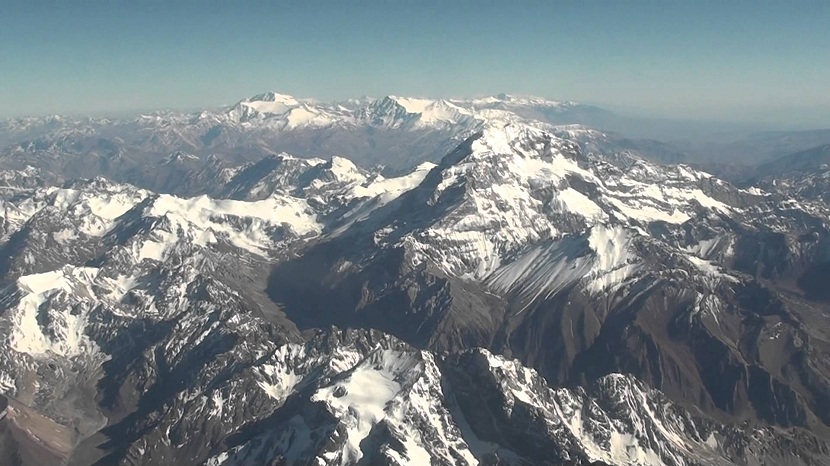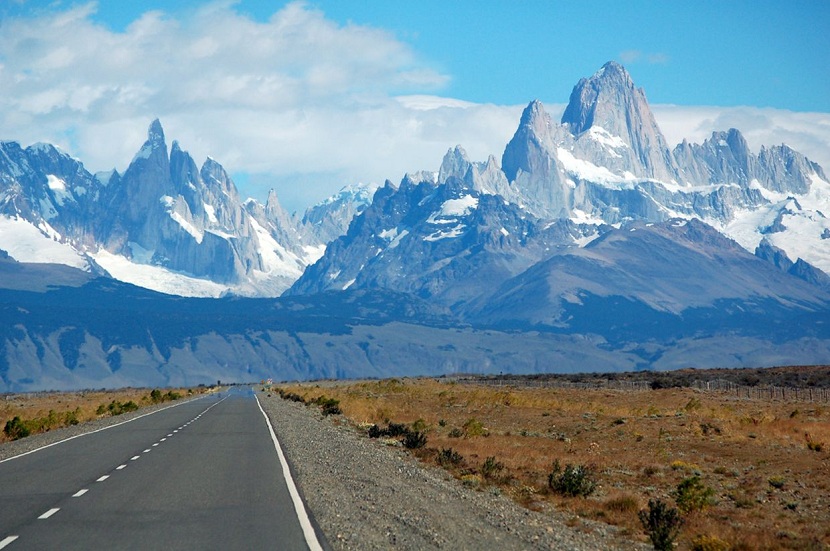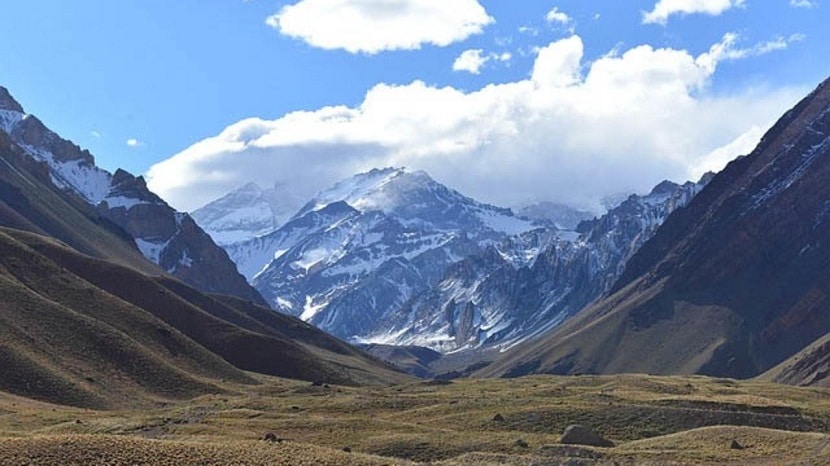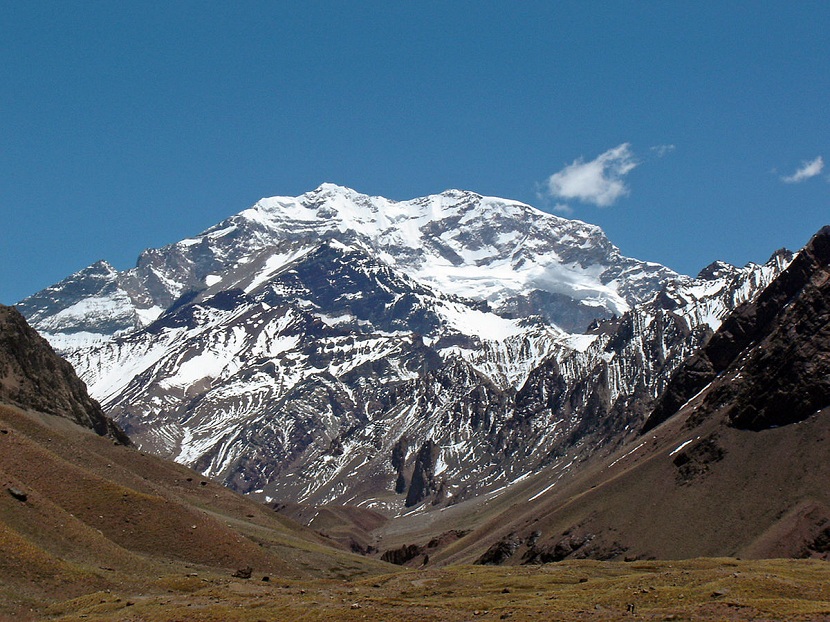
One of the best known mountain systems in the world is the Andes mountains. It is found in South America and is considered the longest mountain range and the second highest in the world after the Himalayas. The origin of the name of this mountain range is not too clear since it is possible that it has arisen by several possibilities. One possibility is that andes comes from the word anti from Quechua what means "raised crest." Others think that it derives from the name Antisuyo which is one of the 4 regions of the Inca empire.
In this article we are going to tell you about all the characteristics of the Andes mountain range and the importance it has according to its biodiversity and natural resources.
Key features

It is a mountain range that is parallel to the coast and sits on a region with high seismic and volcanic activity. This seismic and volcanic activity is the cause of it having geological instability and having such high peaks. It is located in the Pacific Ring of Fire. Although it has these instabilities due to its great extension, it has the lowest oxygen concentration due to its altitude. Despite this he has several native peoples found throughout this region that have adapted to both relief and altitude.
The Inca empire is one of the most famous peoples that inhabited the terrain of the Andes during pre-Hispanic times. Its iconic city Machu Picchu was located in this place at more than 2400 meters above sea level. The total length of this mountain range is approximately 7.000 kilometers. It is between 200 and 700 kilometers wide, depending on the area where we are. The maximum elevation of the peaks that this mountain range has is 6962 meters. Its maximum elevation is Aconcagua.
In order to locate this mountain range we have to go to the western region of South America and it begins from the Caribbean coast to the southern tip of the continent. It crosses a total of 7 countries among which we have Colombia, Venezuela, Ecuador, Bolivia, Peru, Chile and Argentina.
Highest peaks
The highest peaks in the Andes mountain range are found in Peru, Argentina, and Ecuador. The rest of the peaks that are lower are found at the extreme north and south. The mountain range is composed of several mountains and volcanoes among which is the well-known Aconcagua and others such as the following: Nevado Ojos del Salado, Huascarán, Chimborazo, Nevado del Ruiz, Galeras and Bonete.
Some of the most active volcanoes we have on our planet are in this mountain range. In total, it could be counted that it has around 183 active volcanoes. This existence of seismic and volcanic activity means that there are some hot springs and other mineral deposits of great economic interest.
Division of the Andes mountain range

The total of the entire mountain range can be divided into entire sections. The first was located in the northern area that includes the part of Venezuela and Colombia. The second part is considered as a central Andes and corresponds to the cities of Bolivia, Peru and Ecuador. Finally, we have the third part of the mountain range called the southern Andes and corresponds to the cities of Chile and Argentina.
This division serves to establish a kind of natural border between the different countries that coexist with this mountain range. It also serves to separate some of the regions within the countries themselves. Although the mountains are mostly within the tropics, there are high peaks that due to their height they are covered with snow for most of the year and, as a result, are home to glaciers.
These glaciers are the ones that are threatening rising sea levels due to global warming. Much of this territory has arid conditions, especially in the eastern area. However, if you go to the west you can find a more abundant rainfall regime.
It has quite rough terrain as a result of this continuous seismic activity. In the Andean region we can find several plateaus at a considerable altitude where some of the most important South American cities such as La Paz, and Quito and Bogotá are located. This plateau is the second largest in the world, it emerges between Bolivia and Peru and It is located at an altitude of more than 3.600 meters above sea level.
Origin of the Andes mountain range

This wailing gold comes from the tertiary era of the Mesozoic. They are located over a tectonically active region and earthquakes and volcanic eruptions are frequent events. Having a continuous seismic activity over time and having too pronounced peaks, this mountain range is considered geologically young.
It is thought that its formation had its origin after the fragmentation of the Pangea and that, during the time of the dinosaurs, the entire region was occupied by a large lake or an inland sea. After the breakup of the Pangea, the tectonic plates have continued to move during the course of all the years of the Jurassic period until, during the Cenozoic, the Nazca plate and the Antarctic plate moved underneath the South American plate.
This displacement of plates triggered out in creating a subduction zone and the plates began to collide. This caused a force to be exerted that compressed the crust and as a result there were intense earthquakes that caused the crust to push up and fold, forming the ridges that have become mountains. These mountains and have been rising for the last 100 million years, especially with greater activity during the Cretaceous and Tertiary.
Flora and fauna

Being large, there is a great variety of climates and environments. Having all these climates there is a large amount of varied flora and fauna. There are rich people in which only a few living beings can live, but in the rest thousands of species coexist.
Among the most outstanding fauna we find the giant frogs from Lake Titicaca, Andean cock-of-the-rocks, llamas, pumas, hummingbirds and opossums, among others. As for the flora, the dry forests and tropical forests stand out. The vegetation is somewhat scarcer with the presence of grasses.
I hope that with this information you can learn more about the Andes mountain range.